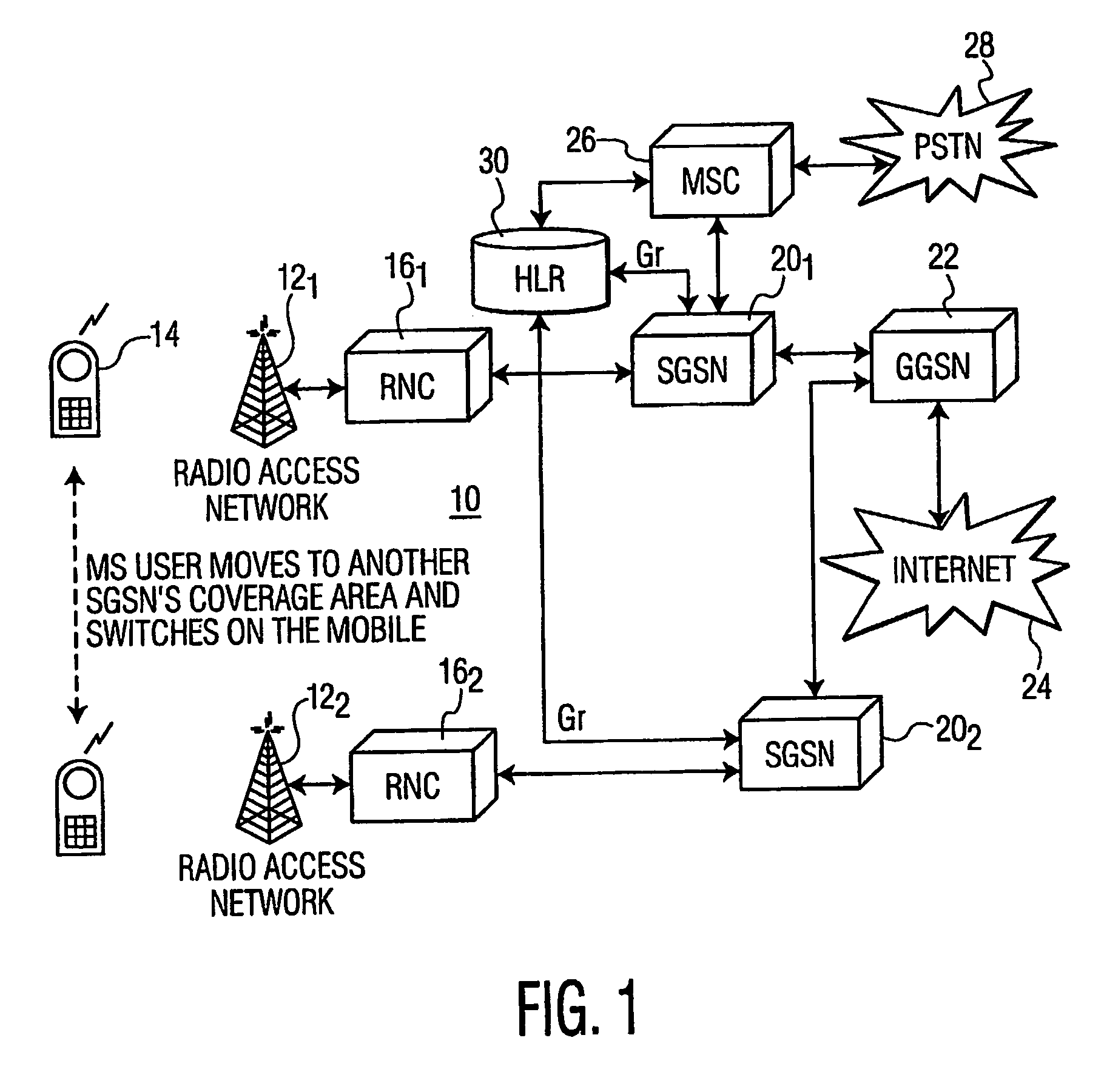Mobile terminal identity protection through home location register modification
a mobile terminal and register technology, applied in the direction of wireless communication, eavesdropping prevention circuit, wireless commuication services, etc., can solve the problems of high cost and high cost of gprs for wireless network service providers to support this servi
- Summary
- Abstract
- Description
- Claims
- Application Information
AI Technical Summary
Benefits of technology
Problems solved by technology
Method used
Image
Examples
Embodiment Construction
[0010]FIG. 1 depicts a block schematic diagram of a wireless telephony network 10 having an architecture as proposed in the UMTS 3GPP standard. The wireless telephony network 10 includes at least one, and preferably, a plurality of radio access networks, illustratively shown as radio access networks 121 and 122. In the UMTS radio access networks comprising of a Node B and a Radio Network Controllers (RNC), the UMTS Node B, serves as the point of access for a mobile wireless terminal 14 seeking to connect with (attach itself to) the network 10. Radio Network Controllers (RNCs) 161 and 162 each control a separate one of the radio access networks 121 and 122, respectively, for the purpose of allocating the necessary resources in each network.
[0011] Each of the RNCs 161 and 162 connects to a corresponding one of Serving GPRS Support Nodes (SGSNs) 201 and 202, respectively, that comprise part of the core of the wireless telephony network 10. Each SGSN manages packet and voice services f...
PUM
 Login to View More
Login to View More Abstract
Description
Claims
Application Information
 Login to View More
Login to View More - R&D
- Intellectual Property
- Life Sciences
- Materials
- Tech Scout
- Unparalleled Data Quality
- Higher Quality Content
- 60% Fewer Hallucinations
Browse by: Latest US Patents, China's latest patents, Technical Efficacy Thesaurus, Application Domain, Technology Topic, Popular Technical Reports.
© 2025 PatSnap. All rights reserved.Legal|Privacy policy|Modern Slavery Act Transparency Statement|Sitemap|About US| Contact US: help@patsnap.com



